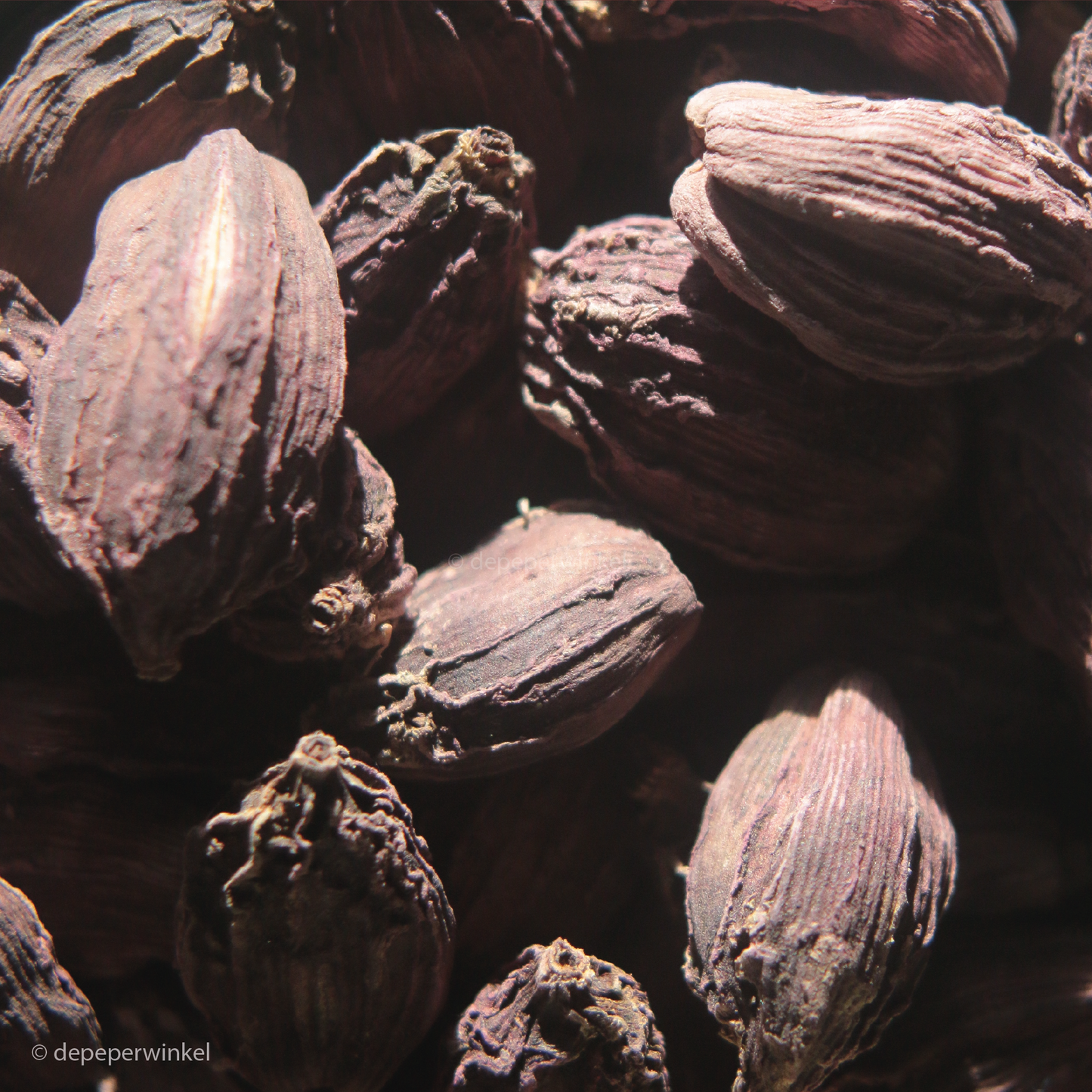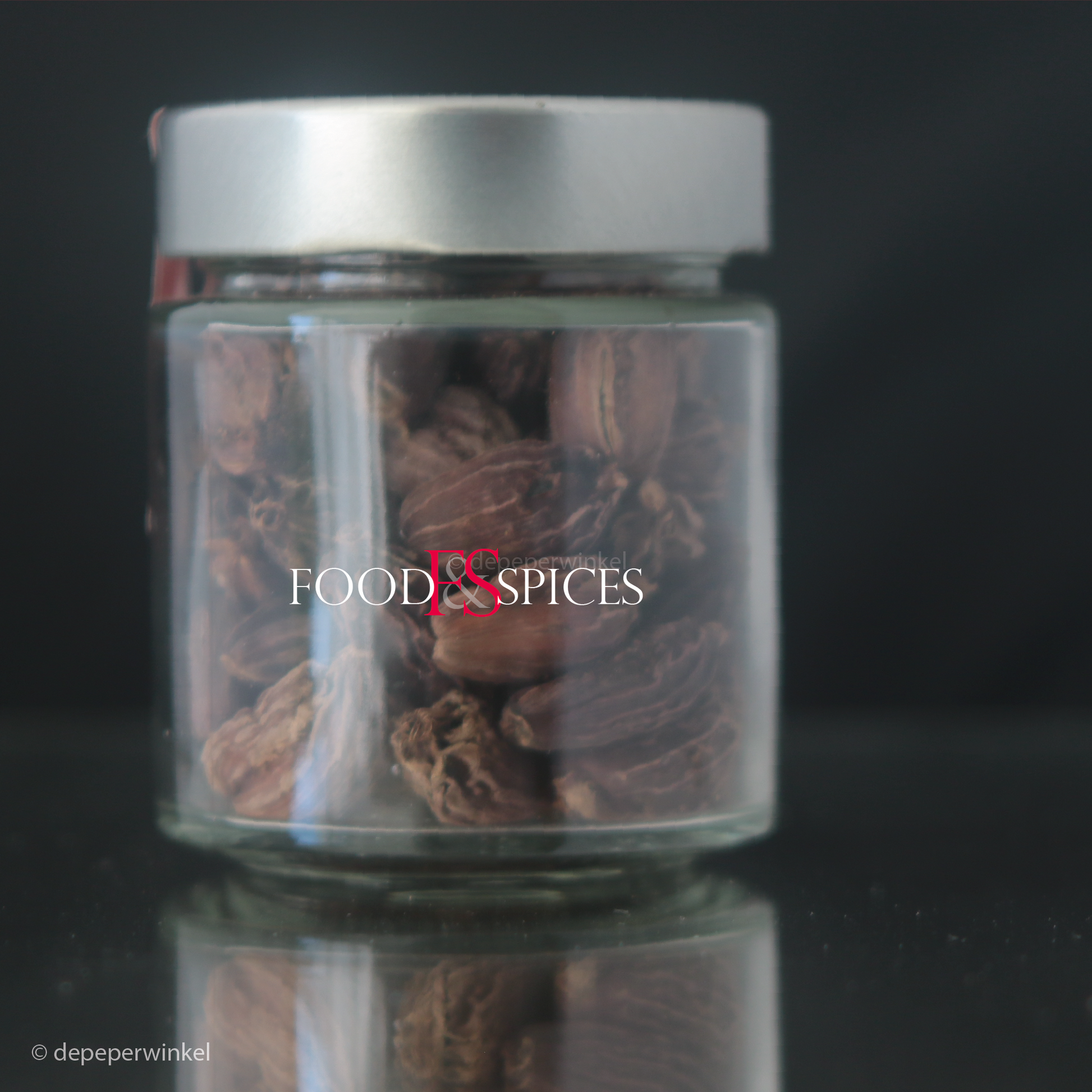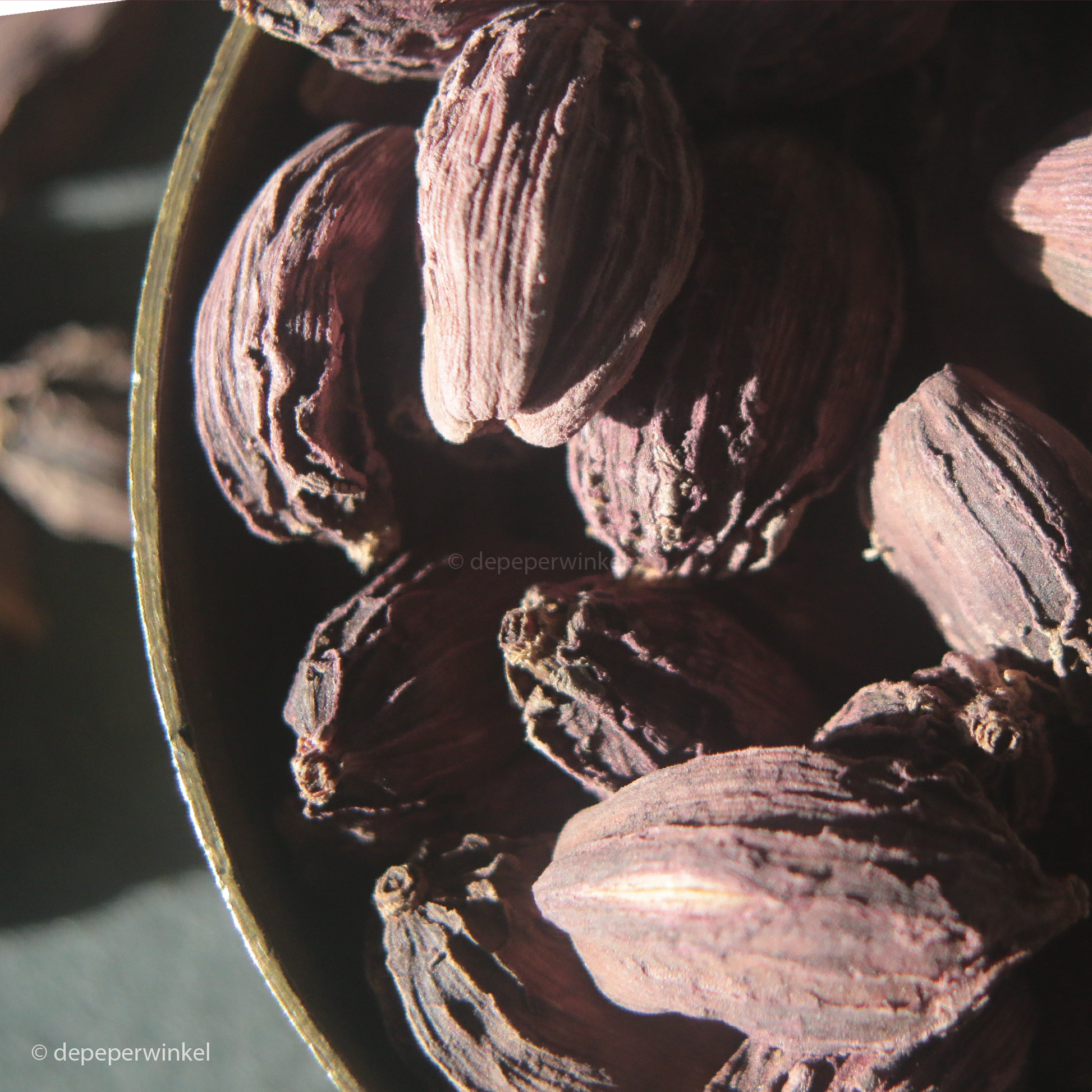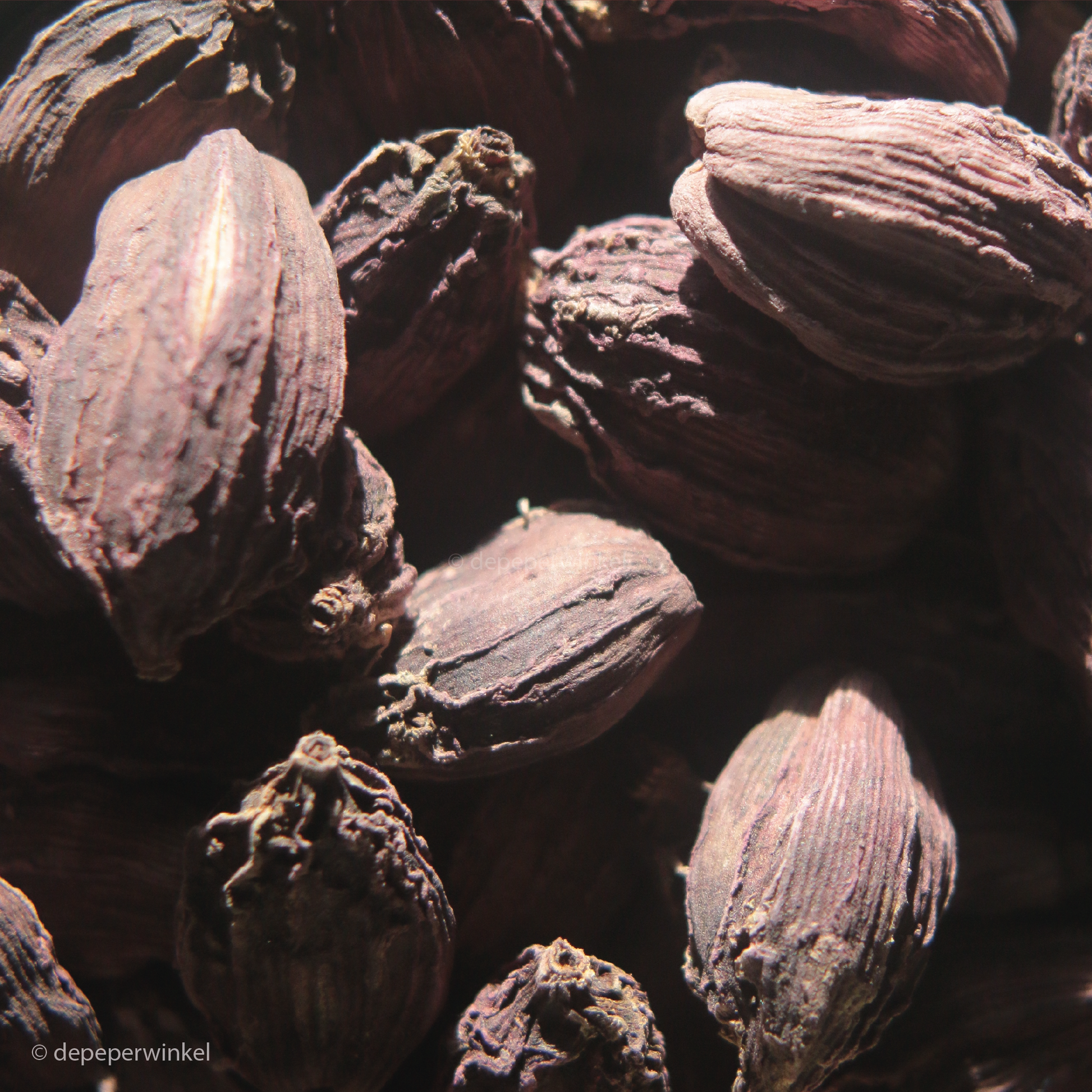depeperwinkel
Violet cardamom (alainchi)
Violet cardamom (alainchi)
In stock
Unable to load availability for pickup
This violet cardamom is a special black cardamom, originating from a plant that has been cultivated in Nepal since the nineteenth century. The fruit is harvested when it is fully ripe. By carefully drying the fruits, they retain their beautiful color and rich flavor palette, hence 'violet'.
Stock item: limited stock
Violet cardamom is a unique product, because most cardamoms of this type - the large cardamom - are sold as 'black cardamom' and are usually dried over charcoal.
This large cardamom is a 'false cardamom'. True cardamom is the smaller green cardamom. The Amomum subulatum on which the alainchi grows belongs to the same subfamily of the ginger family as the plant genera Eletteria (true cardamom) and Aframomum (mbongo pepper, grain of paradise). They have in common that the flowers grow on leafless stems that are formed from the base of the plant.
The cultivation of Amomum subulatum began in the 19th century after Nepalese workers brought the plant from Sikkim to Nepal. It was not until a hundred years later, in the 1950s, that commercial cultivation began.
We have given this special cardamom the Nepalese name Alainchi to distinguish it from the usual form in which this fruit is offered, namely as 'black cardamom'. That is the same fruit, but it is dried above a smoking place (bhatty), a technique that is used not only in Nepal but also in India, Bhutan and China. Black cardamom owes its deep brown colour and smoky aroma to this method of drying.
Nepalese cardamoms are harvested with a knife from August to November when they are fully ripe and have a beautiful violet colour. This colour is preserved by drying the fruits out of the sun and not over fire. The advantage of this controlled method of drying is the controllability of the process. This is lacking in drying over fire, where large differences in quality can occur between different 'batches'.
If you want to get an idea of the cultivation of this beautiful spice in Nepal, take a look at this Youtube video, scroll safely on to the second minute - made by the Nepali Times.
Smell and taste
Alainchi has a warm, spicy aroma of resin, pine, eucalyptus and citrus, with a slight sharpness. Using it in dishes would enhance other spices. Think of cinnamon or cassia, Sichuan pepper, star anise and galangal, (and) the spices with which black cardamom is combined. The main flavour component is 1,8-cineole (70% of the essential oil in violet cardamom):
- 1,8-cineole, eucalyptol, the refreshing taste of mint (and eucalyptus oil)
- β-myrcene, spicy aroma, with notes of fruits (mango, grape, peach) and mint,
- α-terpineol, woody pine, citrus and lily
- terpine-4-ol, sweet woody and peppery aroma, like juniper, and
- t-caryophyllene, a flavor between clove and turpentine
Usage
Alainchi is a spice with a very unique character, not to be used as a substitute for the cooler, green cardamom. Alainchi is used like black cardamom in various spice mixtures such as garam masala, tandoori spices, the Chinese 5-spice mixture (instead of cloves), and 10-spice mixtures. In Szechuan, black cardamom (hēi dòukòu) is used in red-cooked dishes, stews, especially those with beef.In Nepal, they not only cook with it, they also use the seeds as a mouth freshener after a meal. A beautiful pot of cardamom on the table is a sign of hospitality.
Good uses are: with game and wild birds, in curries and in dishes with yoghurt and soups (such as pho), with fish, but not in sweet preparations.
Because the aromas are in the seeds, the seed pod is 'cracked' before use by pressing firmly on it, for example with the handle of a chef's knife, but keeping the seed pod intact as a whole. The advantage of cracking rather than opening is that the seeds stay together and can be removed from the dish before serving. If you want to grind the seeds, of course open the seed pod and do not use the casing. Always cook the cardamom with the dish to get the most out of it. Do not grind more than you think you will use in the short term, the aroma evaporates quite quickly.
Features:
- 100% dried fruits of the Amomum subulatum
- origin: nepal
Assortment
- available in glass and stand-up pouch (no test tubes)
- glass jar contains 45 grams
- stand-up pouches with a capacity of up to 30 to 1000 grams
- larger quantities on request
Gift wrapping
- The jar is available in a tasteful gift packaging, consisting of a cube box filled with black tissue paper
- For an overview of our gift packaging, please refer to the section gift wrapping
Save:
- store your kampot pepper in a closed container
- preferably store in a dark, dry and cool place
- at least good until July 2026 (07-2026)
- This expiration date is an indication
Batch number
The batch number helps us trace which supply an item originates from. It is stated on the packing slip and the invoice
Share





